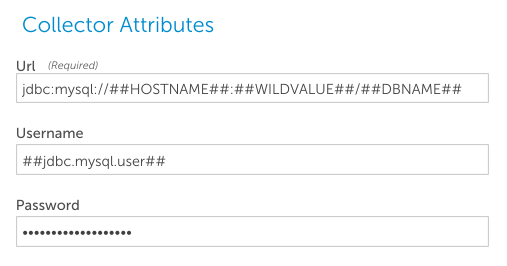Tokens Available for Data Collection
Last updated - 24 July, 2025
Overview
The following tokens are available for use in the Collector Attributes, Active Discovery and Datapoints sections of every DataSource definition:
- ##HOST##. The naming convention by which your device was added into monitoring (ie IP, DNS, or system name).
- ##HOSTNAME##. The name of the device that collection is being applied to.
- ##AGENTROOT##. The file system path to where the collector was installed.
- ##LIBPATH##. The path to the “lib” directory of the collector, where external scripts are typically stored.
- ##JAVAHOME##. The path to the java binary that the collector is using.
- ##POLLINTERVAL##. The polling period (i.e. collection interval), in seconds, as defined in either the DataSource definition or in the custom properties of a resource or resource group (if a custom value has been created to override the DataSource default).
- ##WILDVALUE##. The unique identifier of each instance of a multi-instance DataSource, as reported by Active Discovery or created manually. For example, the Name property of a member of a WMI class, or the unique index on an snmp object in a tree.
- ##WILDALIAS##. The descriptive identifier of each instance of a multi-instance DataSource.
- ##RESOURCEPROPERTYNAME##. Any of the properties associated with a device/resource are available as tokens.
Token Usage Example
For example, consider this Collector Attributes section of the MySQL DataSource:

This configuration area uses many tokens to create a flexible DataSource:
- The device name of the node that collection is occurring on is substituted for ##HOSTNAME##
- Each port that MySQL was found to be listening on by Active Discovery is substituted for ##WILDVALUE##, as each instance is collected.
- The database name that the collection should occur against is substituted for ##DBNAME##. This can be set globally, then overridden for groups and devices as needed.
- The user/password used to access the database are substituted for ##jdbc.mysql.user## and ##jdbc.mysql.pass## (which represent the contents of the password field.)
Thus, when a collection instance runs, the rendered URL will be something like:
jdbc:mysql://testbase.mycompany.com:3306/testdb, and the username and password used will be those properties set on, or inherited by, this specific host.

